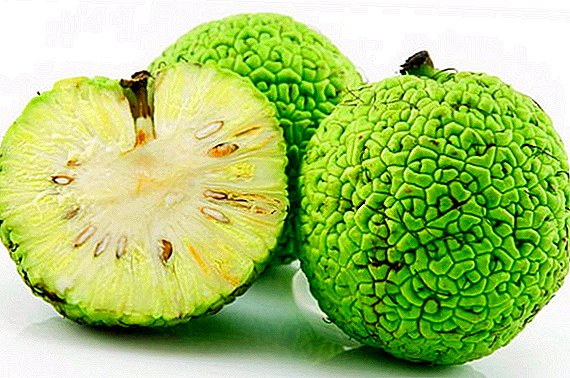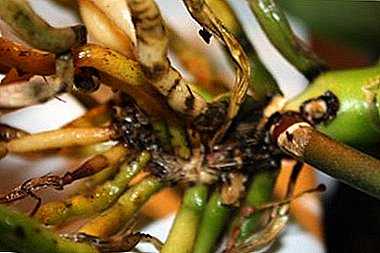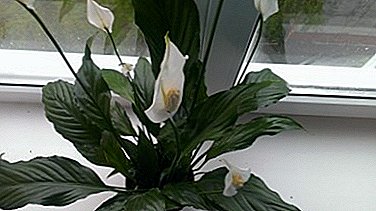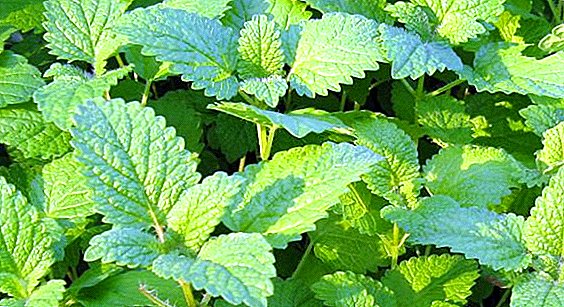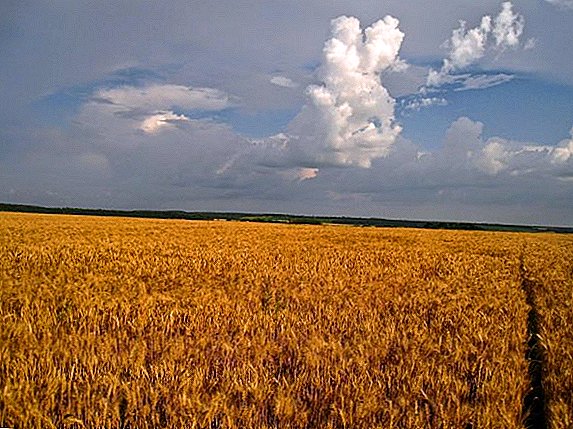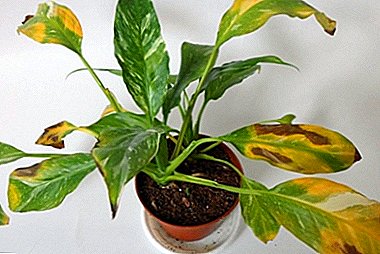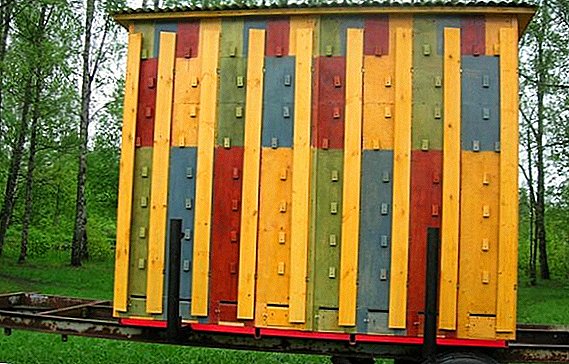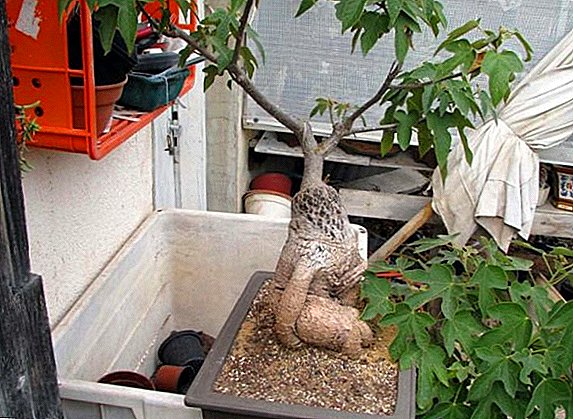 Brachychiton is an exotic plant that attracts attention in any interior. Its main features and rules for home care are described below.
Brachychiton is an exotic plant that attracts attention in any interior. Its main features and rules for home care are described below.
Botanical description of the plant
The genus Brachychiton is part of the Sterkuliev subfamily and its members grow mainly on the Australian continent. Among them you can find both large trees and shrubs. 
The characteristics of the genus brachychiton are as follows:
- height from 1 to 45 m;
- characteristic trunk with a thickening, "bottle" shape;
- leaves from 4 to 20 cm, of various shapes;
- deciduous, semi-deciduous and evergreen species are encountered;
- long and lush bloom (up to 3 months);
- flowers with a diameter up to 2 cm, are collected in inflorescences;
- the color of flowers is varied, including multicolored and speckled;
- the fruit is a thick pod 10–20 cm long with large seeds.
Different types of brachychitons are used in landscape gardening and in indoor floriculture. Indoor and greenhouse species bloom extremely rarely.
Did you know? Brachychiton is often called the "bottle" tree because of the shape of the trunk, which allows the plant to accumulate water during drought.
Kinds
The most popular types of brachychite are:
- maple leafwhich grows in native places up to 40 m. In parks it reaches 20 m and is a deciduous tree with a large branchy crown. The barrel has almost no bottling. Leaves 3-7 long, maple-type, bright green. It blooms in summer bright red buds;

- rock brachichiton It has a characteristic trunk thickening, which in its homeland can reach 3.5 m in diameter (with a height of up to 15 m). For home gardening bred dwarf plants. Blooms in the fall creamy yellow color, the petals can be curled;

- variegated the species is an evergreen tree of medium height with a broad crown. On one plant there are leaves of various shapes. It blooms in the summer with panicles, the color of the petals is yellow-pink, with burgundy specks on the inside;

- multicolored brachychiton it does not have a “bottle” stem, its leaves are green on the front side, and white on the inner side. The tree is full or half leaf. It blooms from November to February with large flowers of pink shades. Leaves, flowers and fruits have a dense bristle coating;
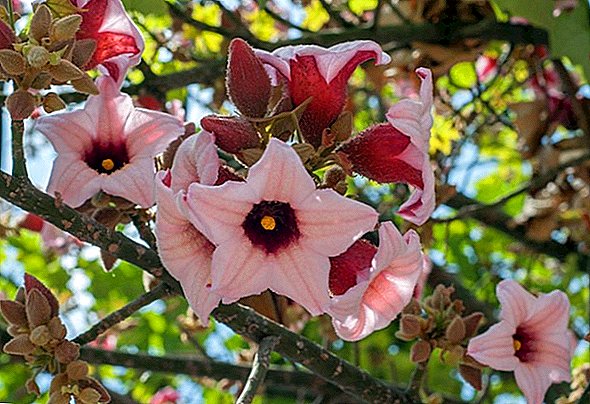
- brachychiton Bidville - dwarf deciduous variety with a "bottle" trunk. At home, it grows up to 4 m, and in culture it grows up to 50 cm. The pubescent leaves are initially burgundy in color, and then turn green. It blooms in spring with spherical inflorescences of pink-red color.
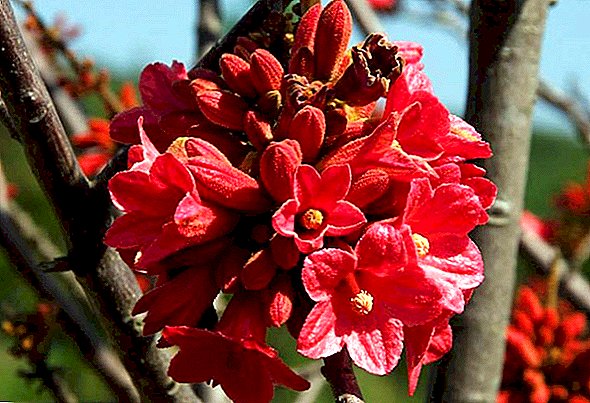
How to choose when buying
To purchase a quality plant, you need to pay attention to the following points:
- choose to buy specialized shops or garden centers, where the plants are in conditions appropriate to their type;
- the foliage of the proposed specimen should be elastic and healthy, with no signs of wilting, preferably the presence of young leaves;
- carefully check the plant for possible pests by inspecting the lower part of the leaves;
- soil in the pot should not have a sharp unpleasant smell.
We advise you to read about the types of indoor plants with a photo and name.
First steps after purchase
Immediately after purchase, the plant needs to adapt to new conditions.
It is recommended to follow these rules:
- in the first days, you need to remove the brachichiton from direct sunlight and move closer to the light source gradually;
- Do not water for several days after purchase;
- Do not apply fertilizer during the first month.
 Possible soil proportions are as follows:
Possible soil proportions are as follows:- on one part of leafy land and peat, as well as two parts of sand;
- a mixture of equal parts of peat, humus, sand, leaf and sod land;
- two parts of garden soil, one part of coarse sand and small gravel.
Important! When transplanting, you must ensure that the root neck is at the same depth mark.
Further care at home
Brachychiton refers to resistant plants and does not require special care, except for some of the points listed below.
Choosing a place
The plant requires bright sunlight and can grow in a southeast or southwest window. On the south window in the hot summer afternoon it is worthwhile to provide a slight shading, as glass can increase the power of the sun and lead to burn foliage.
If there is no other place than the north window, it is necessary to provide additional illumination with special lamps. It will be required in the winter, during a short daylight hours.
A prerequisite for this species is the maximum inflow of fresh air. Daily airing should be carried out at any time of the year. Brachychiton is not afraid of drafts, and protection should be provided only from the direct stream of winter air. 
Temperature conditions
In summer, the temperature should be within + 25 ... + 28 ° C. In the winter months, the plant prefers cooler conditions, ideally + 10 ... + 16 ° C. It is noticed, however, that even a small decrease in temperature during the rest period allows it to adapt to warmer room conditions.
Air humidity
Brachychiton easily carries dry air and does not require additional moisture. However, you should not put a plant pot next to heaters or convectors.
Watering
Due to the ability to accumulate moisture in the trunk, the tree does not require careful control of watering. In spring and summer, moistening is carried out only after the topsoil has dried out.
Read also about the best indoor trees for your home or apartment.The transition to the winter minimum watering should occur smoothly. The frequency of winter watering is influenced by the ambient temperature: if the plant is provided with optimal cool conditions, watering should be minimal. Wintering at higher temperatures makes irrigation conditions similar to spring.
For irrigation use soft water at room temperature: warm in summer and cooler in winter.

Top dressing
Autumn and winter feeding this plant is not required. Starting in March, fertilizer can be applied once every three weeks. It is recommended to use special mixtures for succulents or complexes of a universal type.
Pruning
Pruning sprouts held annually at the very beginning of spring; if desired, you can use the cut as cuttings. The crown of a plant can be trimmed to give it the desired shape.
Strong pruning of adult shoots should be stretched in time. After the first cut, you need to wait for the cut to heal, and only then you can cut the second branch.
Did you know? The name "brachychiton "is due to the type of seed sheath and means" short clothing "(from Greek).
How to propagate the apical cuttings
Brachychiton is easily propagated by top cuttings at least 10 cm long.
The breeding process consists of the following steps:
- Treatment of cut cuttings with a growth stimulator - for example, "Kornevin".
- Planting cuttings in a prepared pot with wet sand and peat mixture.
- Shelter landing glass or film to ensure constant humidity. The temperature inside should be + 24 ... + 27 ° C.
- Providing regular airing and humidification.
- After rooting, the plant is transplanted into a separate container with a diameter of 9 cm.

Possible difficulties in growing
Brachychiton has earned the reputation of being a stable houseplant that is practically immune to disease. However, with frequent overmoistening, rot can occur, and it can also develop due to too low planting.
Possible pests include:
- shield;
- spider mite;
- whitefly.
When an infection is detected, brachychiton must be placed under a warm shower (at + 45 ° C), covering the soil with a film. Additionally, you can handle foliage and trunk "Aktellik" or "Fitoverm".
Important! The plant reacts extremely negatively to tobacco smoke and lack of lighting.
Brakhikhiton differs original appearance and unpretentiousness, which provide this type of popularity among room growers. The plant is hardy enough to recommend it for beginners.









